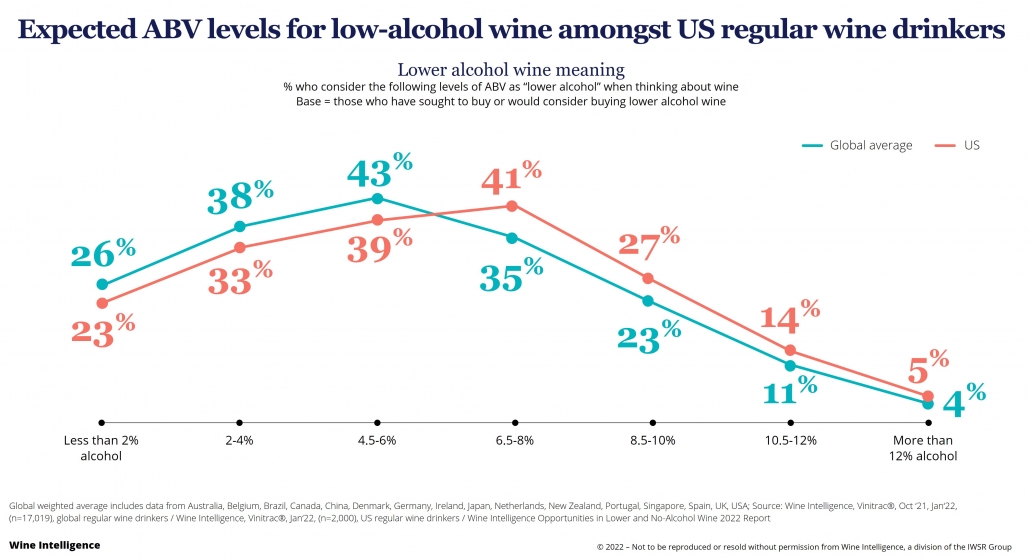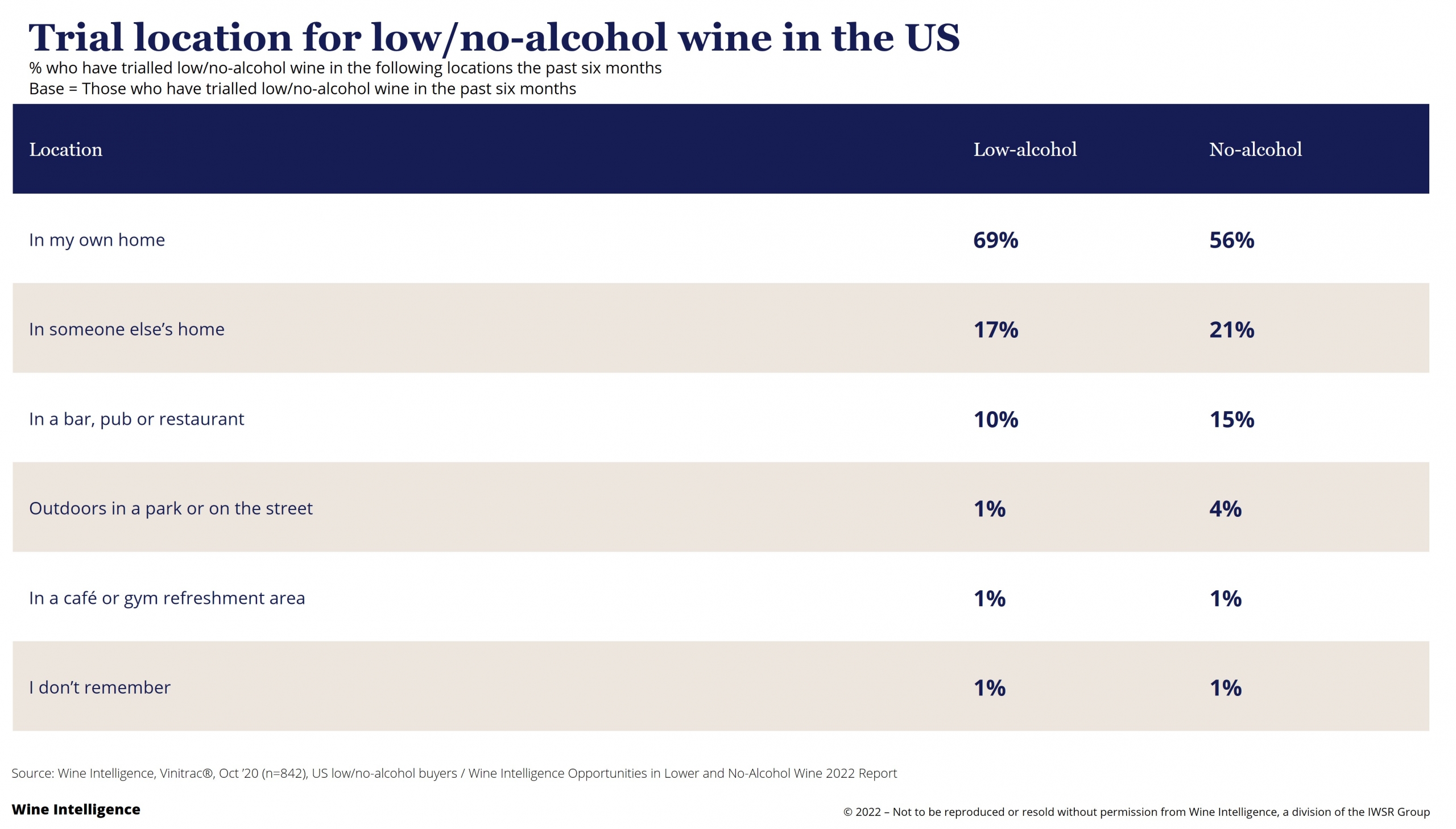As has been well documented, consumer interest in moderating consumption of alcohol has been steadily increasing over the past decade, creating a long-term market opportunity for, amongst other things, lower alcohol wine. And yet, so far, wine containing reduced alcohol levels has not made the level of impact in the US compared with other lower ABV options – most notably ready-to-drink (RTD) alcohol products, with IWSR consumer data showing that 1 in 5 US RTD consumers reporting they have migrated from wine.
Why is this? The consumer data collected by Wine Intelligence over the past 5 years has been telling a similar story: lower alcohol wine may be a good option in principle, but consumers can be disappointed by the taste profile, preferring to opt for alternative lower alcohol options instead. It is one reason, among many, that younger LDA+ consumers are not participating in the wine category in the same way as compared with previous generations.
The lower alcohol wine category is valued at over $1bn in the US, according to IWSR, and has forecast volume CAGR growth of approximately 27% for lower alcohol still wine and 30% for lower alcohol sparkling wine, 2021-2025. This growth forecast is supported by consumer insight from Wine Intelligence, which shows that the opportunity index for lower alcohol wine in the US in 2022 has significantly increased from where it was in 2021.
This increased opportunity stems, in part, from the fact that the proportion of US wine drinkers who are actively switching to lower alcohol options for some of their consumption occasions is increasing, with now 4 in 10 US regular wine drinkers actively seeking to moderate their alcohol consumption. A key trend that has emerged since 2020 is a change in the relationship with alcohol. In 2020, a third of US regular wine drinkers were deterred from low alcohol wine due to their perception that it did not contain enough alcohol to have an effect; in 2022 the proportion feeling this way has fallen to a quarter of drinkers.
Wine Intelligence data also points to the fact that lower alcohol wine’s growth curve lies in the future: whilst 30% of US regular wine drinkers are aware of lower alcohol wine, only 6% have purchased this type of wine and 4 in 10 would consider purchasing these wines in the future.
So, what are the key drivers encouraging US consumers to trial and enjoy lower alcohol wine? Unsurprisingly, it’s the perceived health benefits – including lower in calories – that is the key motivator with US Millennial wine drinkers being significantly more likely to choose wine from this sub-category compared with others. For these drinkers, extrinsic factors also come into play when it comes to choosing lower alcohol wine, including wanting to be seen drinking lower alcohol wine options within their peer group.
And what are the expectations of alcohol levels in low and lower alcohol wine amongst US drinkers? Compared with consumers globally, US regular wine drinkers expect lower alcohol wine to be marginally higher in ABV than that of RTDs and beer. Alcohol expectation levels peak at around 6.5-8% (see chart, below):
Wine Intelligence insight from the US market also shows that the channel opportunity for lower alcohol wine sits firmly in the off-premise, with the key consumption occasion being in the drinker’s own home. Additionally, the competition for smaller format wine (both Tetra Pak and can) is increasing, as beer and RTDs are now often found on the same shelf as wine. This leads to wine directly competing with these lower ABV categories, particularly in quick purchase mode settings such as drugstores and convenience stores. For now, the opportunity for low alcohol wine in the on-premise remains marginal, mainly due to the fact that there is such a broad range of lower and no-alcohol options readily available to choose from in on-premise settings.
A key strategic question for producers, distributers and retailers of lower alcohol wine in the US is price. Will consumers pay the same or more for lower alcohol options, or are they expecting lower prices due to lower alcohol content? From a US regular wine drinker perspective, whilst 1/3rd of drinkers are expecting lower prices for lower alcohol wine, over half anticipate paying either the same or more, suggesting that price is not a key barrier for the future growth and potential of this category.
You may also be interested in reading:



Leave a Reply
Want to join the discussion?Feel free to contribute!